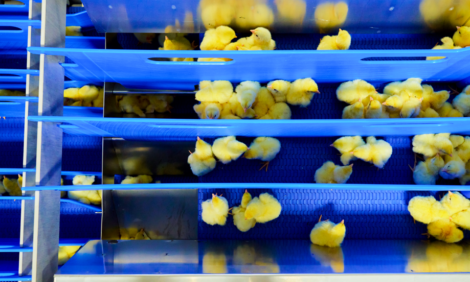



Frequency and Persistence of Faecal Shedding Following Exposure of Laying Hens to Different Oral Doses of <em>Salmonella enteritidis</em>
Oral exposure dose significantly influenced both the frequency and duration of S. enteritidis shedding into the environment via the droppings by infected laying hens, according to USDA ARS researchers in Athens, Georgia.Infection of egg-laying poultry with Salmonella enteritidis and the associated transmission of illness to consumers of contaminated eggs has been a prominent international public health concern for many years, according to Richard K. Gast and colleagues at the USDA Agricultural Research Service's Egg Safety and Quality Research Unit at the Russell Research Center in Athens, Georgia.
Testing and risk reduction programmes for laying flocks have been implemented in many nations with some success, they state in their paper published in International Journal of Poultry Science. However, several critical parameters of S. enteritidis infections in chickens, including the relationship between the magnitude of oral exposure and the frequency and duration of bacterial shedding in voided faeces, remain incompletely defined or explained.
In the Athens study, groups of laying hens were experimentally infected with oral doses of 104, 106, or 108 colony–forming units (CFU) of a phage type 13a strain of S. enteritidis and the frequency at which the pathogen was shed in voided faeces was determined at eight-weekly post-inoculation intervals.
At one week post-inoculation, the frequency of faecal shedding of S. enteritidis ranged from 23.8 per cent for the 104 CFU dose to 87.5 per cent for the 108 CFU dose.
No faecal shedding was detected after three weeks post–inoculation from hens inoculated with 104 CFU, but a small proportion (2.5 to 5.0 per cent) of hens that received doses of 106 or more CFU of S. enteritidis were still shedding at eight weeks post–inoculation.
Gast and co-authors note the results of their study indicate that the oral exposure dose can significantly influence the frequency and duration of S. enteritidis faecal shedding into the environment by infected laying hens.
The researchers add that a more complete understanding of how different levels of exposure are detected by particular sampling methods will support the effective application and interpretation of testing protocols for controlling poultry infections and preventing transmission to humans.
Reference
Gast R.K., R. Guraya and P.S. Holt. 2011. Frequency and persistence of fecal shedding following exposure of laying hens to different oral doses of Salmonella enteritidis. International Journal of Poultry Science, 10(10):750-756.
Further Reading
| - | You can view the full report by clicking here. |
January 2012









